Business or Professional Writing is a type of written communication commonly used in the workplace by professionals from different areas of expertise to communicate ideas, encourage action, give instructions and information, and affirm shared goals. Some examples of professional content include business letters, feasibility studies, reviews and recommendations, application materials, and progress reports. With most of your communication relying on effective professional writing, here are three simplified steps on how to create professional content at work.
Research before you write
There is a tendency for some professionals to start working on their content without adequate knowledge regarding the subject. Doing so will take up more of your time to write and finish the content because you would have a harder time figuring out what to discuss and where to begin. In addition, it’s more likely that you might constantly revise your content as you write without the necessary data to work with.
Study your topic before you begin writing. Conduct proper research and have a clear understanding of the topic before working on your content. When writing your content, make sure that you have a cohesive analysis that’s backed up by data or research.
To make your research more effective, start looking for broad information from reliable sources before delving into specific details. After gathering facts, cross-check and verify your findings from several reputable resources to ensure their legitimacy. Lastly, don’t forget to properly credit researchers when using information from their studies or websites to prevent plagiarism.
Create an outline
Creating an outline is almost a requirement for every professionally written communication. Writing without setting a content outline poses the danger of disorganization. Even worse, you might miss including essential information to back up your statements which will give the reader a hard time understanding your content.
With a well-thought-out outline, you can organize and list your ideas and create a content flow that’s logical and easy to understand. To create an outline, divide your topic and idea into three sections: introduction, body, and conclusion. The introduction should contain a summarized statement and a background of the topic. Use the content’s body to state the main points of your topic. Under that, add sub-points further explaining the main statement. Lastly, for the conclusion, write your overall insight and analysis regarding the topics discussed.
Check your grammar and proofread the final output
Grammar can make or break your content. Though unavoidable, grammar or spelling errors have a big impact on any type of professional communication. Let’s be honest, no matter how good your content is, the smallest mistake in your writing can affect your credibility to the reader since it decreases how “professional” your content looks. With this in mind, be sure to allow time to proofread and copy-edit any type of business communication before publishing or sending it out.
If you’re finding it difficult to find time to check your content constantly, a grammar checker tool can be a worthy investment as it helps proofread your final output. Grammar checker tools can help you to correct grammar, punctuation, and spelling – and depending on the tool you use, it may also contain additional features like plagiarism detection, word choice suggestions, formality level identification, etc.
Though it is not a necessity to use grammar checker tools, if you’re a professional that often writes long content, then it can be a convenient gadget or automation that decreases the time you need to proofread. However, since grammar checkers are often automated tools, it’s still best to give your content a final read-through after running your grammar check on it.
Professional writing is an essential skill to develop for any working professional. Almost any job or specialization will require you to have basic professional writing capabilities. Learning the basics like researching, creating an outline, and proofreading can make a big difference in your writing and communication skills.
For more career tips, follow our social media accounts @SourcefitPH.














